Chinese New Year -The Year of the Dragon: January 23rd
Deborah Swallow | January 23rd, 2012 in : days of significance, East Asia, General, social practices
Happy Chinese New Year! This January will be the start 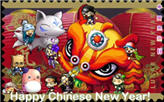
of the Year of the Dragon, as the world welcomes the Chinese New Year. The New Year falls in January due to the track of the new moon, as the Chinese calendar is a mixture of the Gregorian and lunar-solar calendars. Did you know that it’s such an auspicious year that many couples are hoping to have a child born during the Year of the Dragon? Read this full article to get to know many other aspects of the Chinese New Year and see some super pictures.
Chinese New Year is the most important of all the Chinese holidays. It is known as the ‘Spring Festival’, marking the end of Winter. The festival will begin on the first day of the first month and ends after 15 days with the ‘Lantern Festival’. The day before, ‘Chinese New Years Eve’ is known as Chú Xī (除夕), the Eve of the Passing Year. The festival is centuries old and is celebrated in countries where there are significant Chinese populations such as China, Hong Kong, Indonesia, Tibet , Malaysia, Philippines, Singapore, Thailand and in Chinatowns everywhere (e.g. London and New York) . It is a public holiday in many of thse countries.
Happy Chinese New Year!
Related Articles on Chinese New Year
The 15 days of the Chinese New Year
Greet The New Year and Encounter Happiness: Chinese New Year Sayings
Mythology of the Chinese New Year
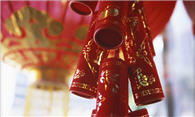 According to legend, the beginning of Chinese New Year started with a fight against a mythical creature called Nian. Nian would come on the first day of the New Year to eat crops, livestock and villagers! To protect themselves, the villagers put food in front of their houses for the beast to eat. They believed that after Nian had eaten the food, it wouldn’t attack them. Nian was scared away by a child in red clothing. So at the start of New Year, the villagers decided to hang red coloured lanterns and scrolls on their windows and doors. Firecrackers were also used to scare it away. Due to the villagers efforts, the beast never came to the village again and was eventually captured by Hongjun Laozu, a Taoist monk.
According to legend, the beginning of Chinese New Year started with a fight against a mythical creature called Nian. Nian would come on the first day of the New Year to eat crops, livestock and villagers! To protect themselves, the villagers put food in front of their houses for the beast to eat. They believed that after Nian had eaten the food, it wouldn’t attack them. Nian was scared away by a child in red clothing. So at the start of New Year, the villagers decided to hang red coloured lanterns and scrolls on their windows and doors. Firecrackers were also used to scare it away. Due to the villagers efforts, the beast never came to the village again and was eventually captured by Hongjun Laozu, a Taoist monk.
This is why at New Year time, Chinese people today use red coloured decorations and set off firecrackers.
The Chinese New Year and the Animal Zodiac, Astrology and Yin/ Yang
The Chinese have a 12 year cycle of the animal zodiac, 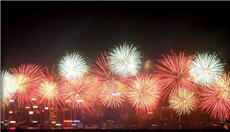
with an animal corresponding to each year. For example, the Year of the Rat in 1996, fell 12 years later in 2008 and will next fall in 2020. This year, 2012 is the Year of the Dragon, which last fell in 2000. The animals are Rat, Ox, Tiger, Rabbit, Dragon, Snake, Horse, Goat, Monkey, Rooster, Dog and Pig. In addition to the year corresponding to the animal zodiac, the Chinese also have a 10 year cycle of heavenly stems, relating to 5 elements of astrology (Wood, Fire, Earth, Metal and Water). These elements will correspond to the year and are rotated every two years. Furthermore, Yin and Yang, the opposite natural forces, alternate each year and will be given to the New Year along with the elements of astrology, for example, the year of the Yin Fire Rat.
Preparing for the New Year
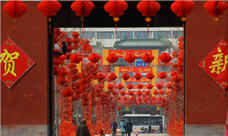 Regional customs in China to celebrate the New Year vary widely. People spend a lot of money to buy presents, decorations, materials, food and clothing. It is also tradition for the house to be thoroughly cleaned, to sweep away ill fortune. Windows and doors are decorated with red paper cuts (as red is used to scare away Nian) with themes of ‘good fortune’ and ‘happiness’ and some are painted red. Red is the predominant colour used in New Year celebrations. Red is the emblem of joy, and this colour also symbolizes virtue, truth and sincerity.
Regional customs in China to celebrate the New Year vary widely. People spend a lot of money to buy presents, decorations, materials, food and clothing. It is also tradition for the house to be thoroughly cleaned, to sweep away ill fortune. Windows and doors are decorated with red paper cuts (as red is used to scare away Nian) with themes of ‘good fortune’ and ‘happiness’ and some are painted red. Red is the predominant colour used in New Year celebrations. Red is the emblem of joy, and this colour also symbolizes virtue, truth and sincerity.
In Buddhist or Taoist households, home altars and statues are cleaned thoroughly, and Taoists will ‘send gods’, burning paper effigies of Zao Jun, the kitchen god, the recorder of family functions. It is said that the Kitchen god will then report to the Jade Emperor of the households transgressions and good deeds.
Chú Xī (除夕), the Eve of the Passing Year
This will be celebrated with a feast, with families getting 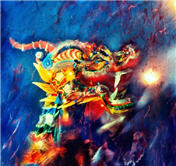
together. Traditional foods include fish and meats such as pig, duck or chicken, dessert with sweet delicacies. In Northern China, dumplings are made, to symbolise wealth. In the south, a new year cake is made and pieces of it given to friends and relatives. After dinner, some families will go to temple to pray for a good new year and others hold parties at home. Firecrackers will also be set off into the sky. The firecrackers relate to the Chinese myth, of scaring away the monster Nian.
The following morning, on the Day of the New Year, children will receive money in red paper envelopes and wish their parents a happy and healthy new year. It is tradition to put aside grudges and wish peace and happiness to others.
Dragon or Lion Dance
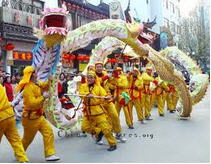 Dragon and lion dances are common during Chinese New Year. It is believed that the loud beats of the drum and the deafening sounds of the cymbals together with the face of the dragon or lion dancing aggressively can evict bad or evil spirits. Lion dances are also popular for opening of businesses in Hong Kong.
Dragon and lion dances are common during Chinese New Year. It is believed that the loud beats of the drum and the deafening sounds of the cymbals together with the face of the dragon or lion dancing aggressively can evict bad or evil spirits. Lion dances are also popular for opening of businesses in Hong Kong.
New Year Greetings
The most common auspicious greetings and sayings consist of four characters, such as the following:
- Jinyu mangtang – “May your wealth [gold and jade] come to fill a hall”
- Dazhan hongtu – “May you realize your ambitions”
- Yingchun jiefu – “Greet the New Year and encounter happiness”
- Wanshi ruyi – “May all your wishes be fulfilled”
- Jiqing youyu – “May your happiness be without limit”
- Zhubao pingan – “May you hear [in a letter] that all is well”
- Yiban wanli = “May a small investment bring ten-thousandfold profits”
- Fushou shuangquan – “May your happiness and longevity be complete”
- Zhaocai jinbao – “When wealth is acquired, precious objects follow”

Tags: astrology, Chinese New Year, Chú Xī (除夕), mythology, preparations, the eve of the passing year

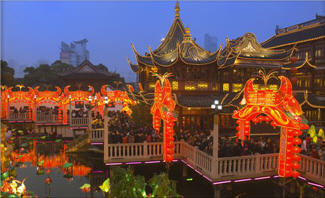
 Hello, I'm Deborah Swallow and, for the last fifteen years, I've worked in over thirty countries addressing the complexities of people working internationally across multiple cultures, so individuals and organisations alike can gain an authentic competitive edge and win in international markets.
Hello, I'm Deborah Swallow and, for the last fifteen years, I've worked in over thirty countries addressing the complexities of people working internationally across multiple cultures, so individuals and organisations alike can gain an authentic competitive edge and win in international markets. 